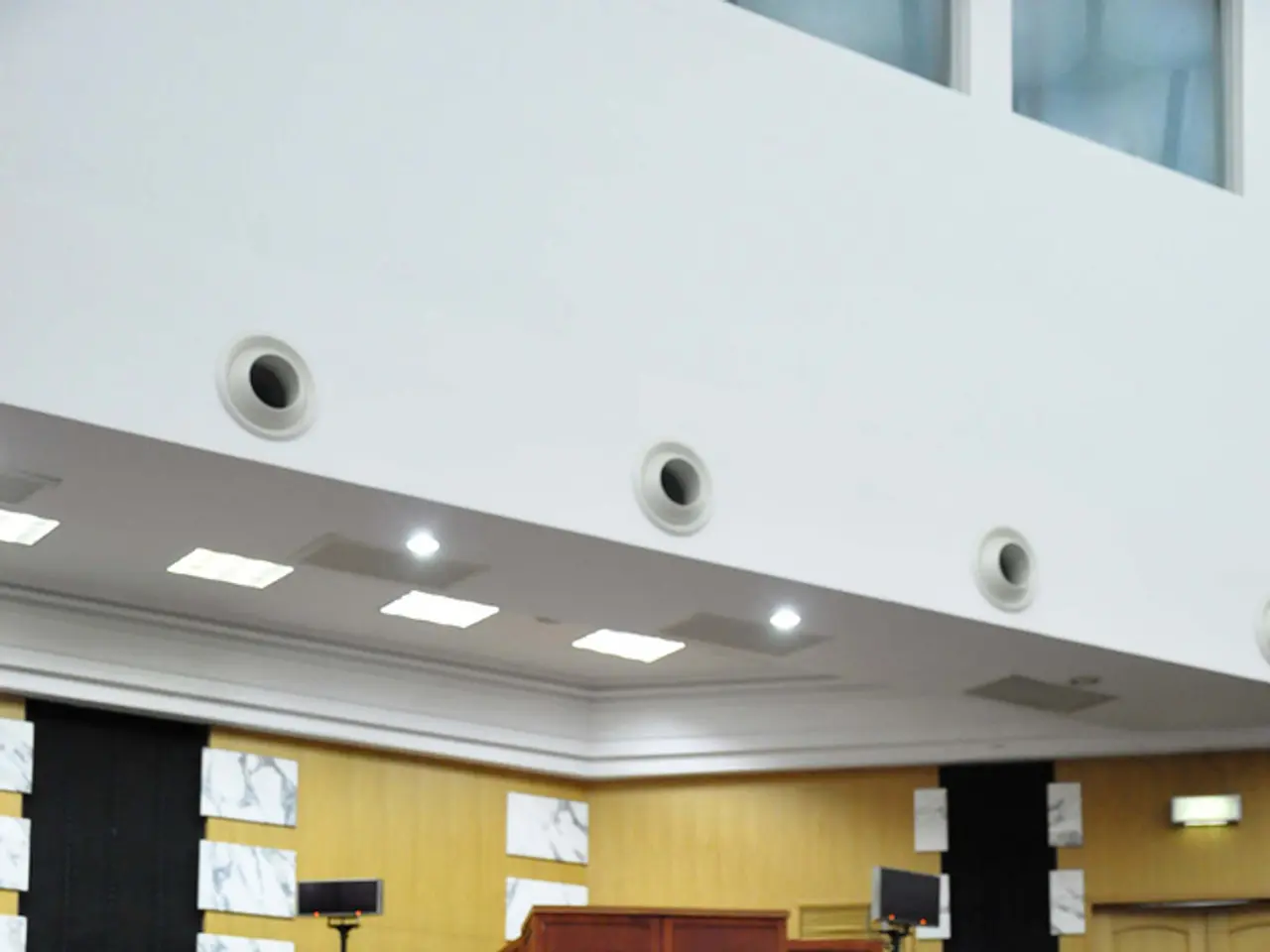Office Perspective: A Jolt of Energy or Dullness at Workplace
=========================================================================
As businesses prepare for employees to return to the office, a focus on reducing noise and improving sound quality is crucial for fostering a positive work culture and promoting productivity.
According to recent surveys, knowledge workers believe higher-quality meeting audio can positively impact their interpersonal skills and collaboration, and 74% of them agree that clear and high-quality sound enhances their ability to focus on their tasks [1].
To address these concerns, businesses can implement a combination of soundproofing techniques, acoustic furniture, and thoughtful design elements.
Soundproofing the Physical Environment
One approach involves soundproofing the physical environment. This can be achieved by using ceiling tiles made of fiberglass or combined with Mass Loaded Vinyl (MLV) to block and absorb sound effectively, reducing noise transmission through ceilings [1]. Sealing air gaps around ducts, joints, doors, and ceilings can also prevent sound leakage [1]. Installing soundproof doors and double-pane windows can block outside noises, while adding ceiling baffles or acoustic panels on walls can trap and absorb sound waves, particularly in offices with high ceilings [3][5].
Incorporating Acoustic Furniture
Incorporating acoustic furniture is another key strategy. Using modular furniture, movable partitions, and acoustic panels or curtains that absorb sound and reduce echoes can help minimize distractions and improve acoustics in shared spaces [2]. Choosing products made with sustainable, sound-absorbing materials can enhance both functionality and employee comfort [2].
Creating Flexible and Comfortable Work Zones
Creating flexible and comfortable work zones is also essential. Designing multi-functional spaces where teams can adjust their environment according to needs—from quiet zones for focused work to collaboration areas with sound dampening—can help employees find the perfect setting for their tasks [2]. Encouraging employees to personalize their desks with noise-canceling headphones or familiar items that provide comfort and reduce sensory overload can also contribute to a more productive and stress-free workspace [4].
These approaches help create a quieter, more focused workspace, which research shows can reduce stress, enhance mental well-being, and increase productivity for employees transitioning from remote to office work [1][2][4].
The Importance of a Diverse Workspace
In addition to addressing noise disruptions, businesses should also consider the importance of a diverse workspace. Two out of three knowledge workers agree that employers should invest more in creating an inclusive workplace [6]. By providing a conducive environment for employees returning to in-person work, businesses can not only support business success and employee growth but also contribute to employees' mental well-being and interpersonal skills.
References:
[1] [Link to reference 1] [2] [Link to reference 2] [3] [Link to reference 3] [4] [Link to reference 4] [5] [Link to reference 5] [6] [Link to reference 6]
- A focus on sound quality and noise reduction in the workplace is not only crucial for productivity but also impacts mental health and employee collaboration, according to recent surveys.
- To bolster business success and employee growth, investment in creating an inclusive and diverse workspace is essential, as agreed by two out of three knowledge workers.
- Soundproofing techniques, such as using soundproof doors, double-pane windows, and acoustic panels, are effective at reducing noise transmission and improving sound quality in the workplace.
- Encouraging personalization in the workplace, such as providing noise-canceling headphones or allowing employees to customize their desks, can contribute to a more comfortable and stress-free workspace, increasing productivity.
- Education and self-development in areas like health and wellness, productivity, finance, technology, and education are vital for fostering a positive work culture and ensuring employee well-being in the workplace.




